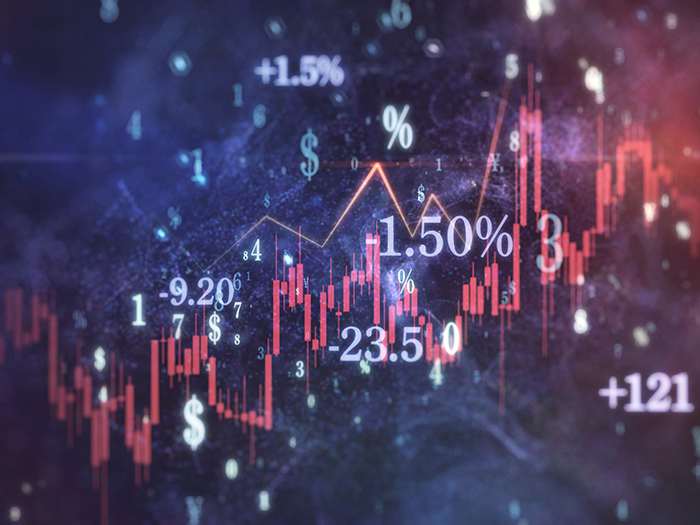Big Data, Climate Change and the Talent Gap: The Biggest Risks We Need to Prepare for Now

The world is changing. Now more than ever, individuals and companies alike are connecting across the globe, expanding their enterprises as well as opening themselves up to potential risk.
As technologies advance and transportation connects far off places — giving the world’s inhabitants even more access to one another — mitigation strategies to combat these interconnecting risks are also shifting.
Take the coronavirus pandemic as an example. Because of how the world is connected, what started as a localized outbreak in Wuhan, China spanned the globe in a matter of weeks, causing many businesses to shut their doors while countries worked to contain the global pandemic.
Social and news media covered the virus morning, noon and night. Employers scrambled to create business continuity plans as work-from-home and telecommuting became the sole drivers of business operations.
“What was once known as a human resources perk at U.S. firms has now become a critical link in the business continuity and resiliency chain; the ability to telecommute,” wrote Les Williams, CRO and co-founder of Risk Cooperative in a Risk & Insurance Risk Insider.
While the risk lessons from COVID-19 are still being learned, the pandemic has set the stage for risk professionals to think more critically about what the future holds. What happens if another pandemic arises? What other unseen, yet potential risks exist that can impact how a business will thrive?
But how should professionals go about addressing these dynamic risks of the future today?
It starts with understanding how these risks are coming into play.
“The insurance industry is facing seismic change. Data, technology, expectations from customers and society are just some of the forces that are changing the way insurers will operate,” said Sasha Sanyal, global business leader for insurance, Genpact.
It is with this in mind that Genpact conducted a study entitled “Insurance in the Age of Instinct” to better understand the world its clients of today will be operating in tomorrow.
A Study in Risk: Data and Technology
Genpact’s study found data to be the biggest driver of change in the industry.
“The biggest opportunity — and challenge — for insurers is how to harness data and advanced technologies like artificial intelligence most effectively to manage risk,” said Sanyal.
Our world is hyper-connected, with everything from the Internet and smartwatches to alarm systems and self-driving cars now being linked together by technology. Each connected device or intelligent design enables insurers to collect data on consumers.
Is this individual driving too fast? Do they have sensors at their business to detect flooding? How fast is this employee’s heart beating when performing specific on-the-job functions?

Kera McDonald, chief underwriting officer, bespoke, Swiss Re Corporate Solutions
All this information can be collected through devices and used to find the exact product or service that the customer needs.
“[Tech] is enabling the proliferation of eCommerce, the use of data, personalized services and sharing of assets. Consumers are increasingly demanding personalization, effortless experiences, on-demand and tailored-to-their-needs products and services,” said Daniela L. Lohse, associate vice president, innovation leader, property & casualty, Nationwide.
“For insurers, it’s all about what do to with that data [they’ve collected] and how to use it to deliver more personalized services that increase value to customers,” Sanyal added.
With these avenues of data, however, come risk.
Data and technology open businesses up to significant cyber threats. One Cybercrime Ventures study estimates that cyber crime damages to businesses are anticipated to reach as high as $6 trillion annually by 2021.
Additionally, technology itself is leading to potential global tension, according to one AXA XL study.
“Geopolitical competition over emerging technologies is leading to more fragmented supply chains, increasing costs for businesses. Indeed, countries may eventually develop entirely separate technology ecosystems, raising the costs of compliance for businesses,” the study authors wrote.
“These developments would create new risks and vulnerabilities, alongside new threats exposed by the eventual development of quantum computing.”
AXA XL’s Emerging Risks Survey is an annual study collecting industry leaders’ thoughts on the future of risk management. Data and technology, according to the report, remain in the top five for a second year in a row. It’s important to note, however, that the survey was published before the 2020 COVID-19 pandemic, which has its own implications on the future global economy.
“Most specialists agree that the full-scale implications of cyber threats are yet to be experienced, especially since technology is rapidly evolving,” the authors wrote.
“Data is everywhere and it’s only going to keep growing,” Sanyal added. “The key to success in the future is how to capture the data and integrate it agilely throughout enterprise operations to make faster, smarter decisions that show customers you care about them.”
A Deeper Dive: Technology and Transportation
One thing is clear: While technology brings risk, so too does it bring reward.
“Technology is both a risk in itself and a possible help in mitigating risks if we can harness its power. Technology is connecting us in ways that are pervasive and evolving. At the same time, it is allowing us to better analyze events and root causes,” said Kera McDonald, chief underwriting officer, bespoke, Swiss Re Corporate Solutions.
One industry seeing a huge impact from technology is transportation, where the risk landscape is ever-changing as vehicles become more dynamic and consumers have a need for on-demand mobility.
“Electric content in vehicles has grown dramatically,” said Susanna Gotsch, director, industry analyst, CCC Information Services. With new technologies coming into play, cars can now park themselves, brake automatically if a sensor detects a sudden stop, alert a driver to lane departure, set windshield wiper speed based on rainfall and so much more.
Because of this, many transportation industry initiatives have focused on the scale of and investment in connected and shared cars. Technology has effectively shifted the industry from a reactive to a proactive approach.
“Rapidly advancing availability and proliferation of data generated through evolving technology has enabled insurers to begin including connected car data into their pricing models,” said Nationwide’s Lohse.

Jacqueline LeGrand, founder and CEO of MAPTYCS
Traditionally, auto insurance would step in after an accident or incident to help the insured. Now, with technology that’s essentially gathering everything about a vehicle from average speed to pressure applied to the brakes, insurers have an opportunity to understand a business’s drivers and underwrite to their specific risks.
As for the sharing economy, the likes of Uber and Lyft have certainly changed the way the public views transportation. Lohse predicts that this new cultural expectation of on-demand transportation will likely result in a transition from personal vehicle ownership to shared mobility.
“It will ultimately drive growth in an evolving commercial auto insurance market amidst the decline of the personal auto insurance market,” she said.
The final piece of the transportation risk puzzle is autonomous vehicles.
According to Gotsch, 2019 was a bit of a wake-up call for manufacturers: “2019 showed the industry how far it still needs to go before we make autonomous vehicles a reality,” she said.
But with autonomous vehicles as the end goal, the risk landscape is likely to see big change in the coming decade.
“There will be an even bigger debate on liability versus personal liability during accidents,” said Gotsch.
“Vehicle technology is rapidly evolving from human-controlled to machine-controlled vehicles, reducing accidents and saving lives … and ultimately resulting in a decline in traditional insurable risks and a shift in risk accountability from driver/owner to manufacturer/supply chain,” Lohse added.
Once autonomous vehicle technology advances to fully autonomous and becomes accessible to the public via fleets and mobility services companies, “risks will shift from basic auto liability to liability for technologic failures, data security and privacy breaches. At the same time, auto manufacturers will become a major bearer of these risks [and] will attempt to capture much of the revenue associated with these risks by self-insuring and providing additional coverages to vehicle owners,” Lohse predicted.
The Biggest Concern: Climate Change
All the bells and whistles of a tech car, however, aren’t going to prevent damage in the event of, say, a hailstorm.
“Weather is more severe in recent years than it has been in the past. Hailstorms, wildfires, hurricanes are all getting bigger with more power,” said Gotsch. And it’s causing higher losses across many industries — not just transportation.
In the AXA survey, 67% of respondents said climate change is the industry’s number one risk. The 2019 survey also marked the fourth year in a row climate change held the number one spot.
“The insurance industry is facing seismic change. Data, technology, expectations from customers and society are just some of the forces that are changing the way insurers will operate.” — Sasha Sanyal, global business leader for insurance, Genpact
“Respondents emphasize most the physical risks stemming from a changing climate. They are worried by increased exposure to and changing patterns of extreme weather events such as floods, storms, and rising sea levels, which are perceived as having more tangible effects than financial risks or liability risks related to climate change,” reads the report.
“Climate change is here to stay and will affect global economic drivers such as transportation and agriculture,” said Jacqueline LeGrand, founder and CEO of MAPTYCS, an Insurtech company dedicated to connecting data with risk management.
“Risk management and insurance will play an important role in providing new types of coverages such as parametric insurance, but SMEs, large corporations and countries will need to move faster to adjust their processes and the regulatory environments to adjust to the new challenges we are facing, because not all risks can be insured at a reasonable cost,” LeGrand added.
Experts agree that climate change is adding more than a little heat. Volatile storms, prolonged wildfire seasons and extended droughts are disrupting globalized businesses everywhere, from their physical store to their supply chain.
“Climate change and the interconnected nature of the global economy are creating dynamics that the world hasn’t experienced in the past,” said McDonald of Swiss Re.
“In insurance terms, the severity of events is increasing drastically — whether it be from the concentration of risk due to urbanization or the global supply chain creating correlation between industries. When this increased severity is combined with the increased frequency and volatility of natural catastrophe events, our customers and the industry are facing a very different risk landscape,” she said.
According to McDonald, over the last 25 years, the average insured losses from extreme weather events more than doubled.
“More than half of all insurance losses are now driven by so-called ‘secondary perils’ linked to extreme weather … The evolving nature of the climate change impact and the risk landscape in general means that risk managers can no longer simply look to the past for indications of what we can expect to happen in the future,” she said.
“We have to use the additional transparency and access to information that technology provides to be in front of risks as they emerge.”
Never in Short Supply
Technology, data collection, transportation, climate change — these are just some of the areas that are playing a role in the future of risk.

Daniela L. Lohse, AVP, innovation leader, property & casualty, Nationwide
But many others exist that risk professionals need to have a pulse on as they continue to grow their mitigation strategies. Here are just a few more growing risks affecting the future risk landscape:
The Talent Gap
The RIMS’ Risk Management Talent 2025 report shows only 16% of insurance professionals believe there will be enough graduates to fill open risk management positions by 2025.
But the search for talent is not limited to insurance and risk management; as more of the baby boomer generation retires, every industry is feeling the talent strain.
“The patterns of talent shortage are a screaming blinking light that there is a massive retirement bubble. There has to be a dramatic reconsideration of the type of talent that companies are seeking. It’s deeply concerning how poorly prepared organizations are to face this,” Anna Beninger, global head of diversity & inclusion, AXA XL, told Risk & Insurance.
“New and evolving ways of attracting talent are important considerations in this changing environment,” added Genpact’s Sanyal.
Financial Instability
“A decade after the Great Recession, growth is still in recovery mode,” wrote the AXA XL study authors. “Should growth slow before subsisting financial imbalances recede completely, imbalances may create risks that need to be carefully monitored over the next five to ten years.”
This is even more pressing in the aftermath of the COVID-19 pandemic, which has its own implications on the future global economy.
Ethics and Social Responsibility
Consumers are searching for ethically sound companies to support in business: “People are demanding greater transparency with companies, often expecting businesses take a stand, and valuing companies when they do,” said Sanyal.
“A company’s broader ethics runs deeper with customers today, and we see this trend continuing over the next decade and consumers continue to look for business that align with their personal values.”
Reputational Risk
In tandem with sound ethics, a business’s reputation also holds weight in the public eye. Businesses that fail to act in a timely manner or instead act tactlessly risk a decrease in public support — and a potential increase in litigation.
According to Nir Kossovsky, CEO of Steel City Re and an R&I Risk Insider, between July 2018 to July 2019, “25 complaints were filed or amended in federal court that alleged, at least in part, board-level responsibility in connection with corporate reputational damage. Only six such cases were filed in the preceding year.”
Yet, despite these growing risks, risk professionals have the tools to start mitigating and protecting their businesses today.
Sanyal suggests risk professionals start with whole-system planning.
“Whole-system planning will provide greater resilience for insurers to survive in the long term—not just two, but 20 years and more. It allows more protection against systemic risks like climate change and cyber threats.
“Insurers [will] need to consider innovation partnerships with government, infrastructure planners, research universities, manufacturers of smart devices, telematics technology providers, etc. New business models are necessary to determine the appropriate and most effective risk strategies.” &










